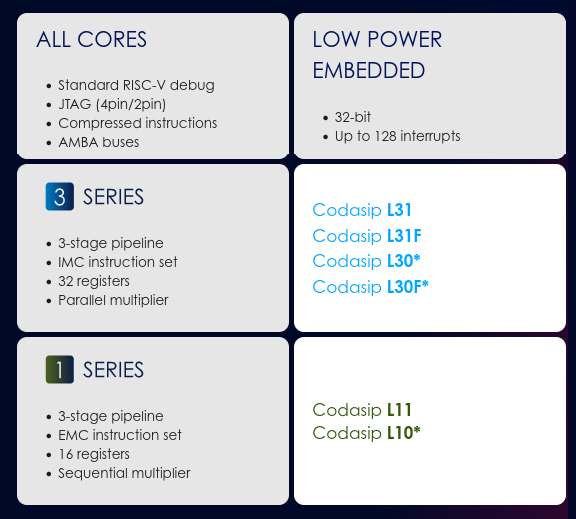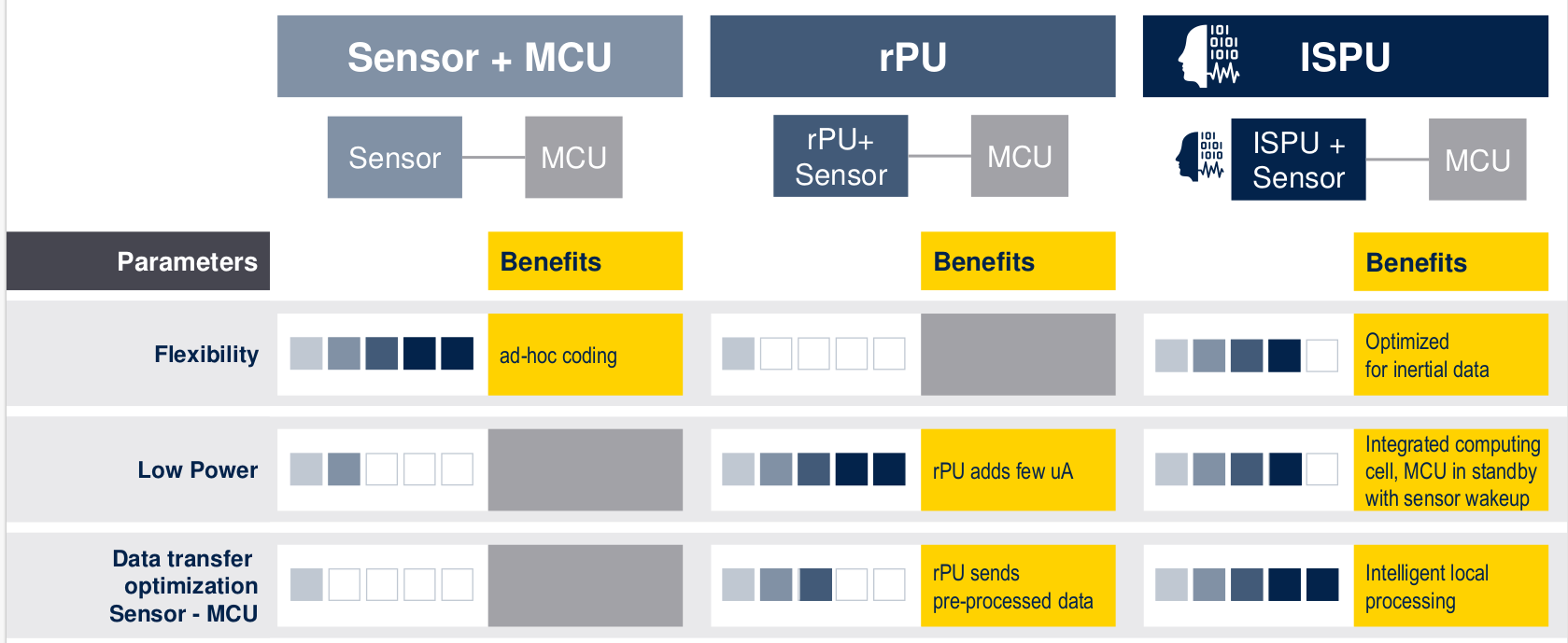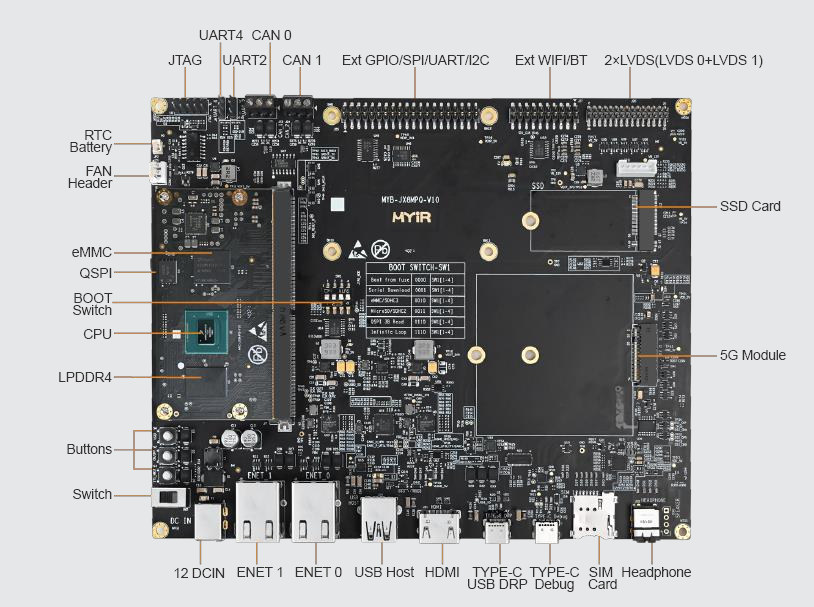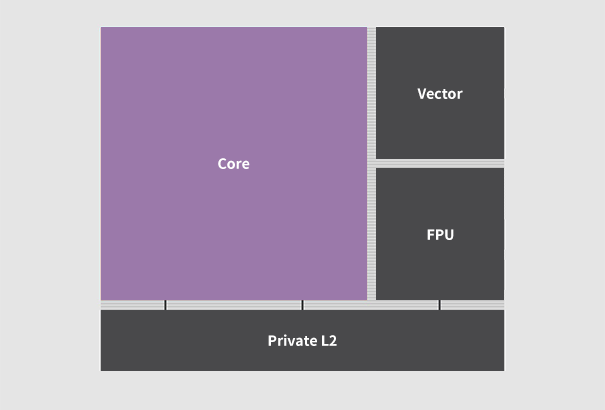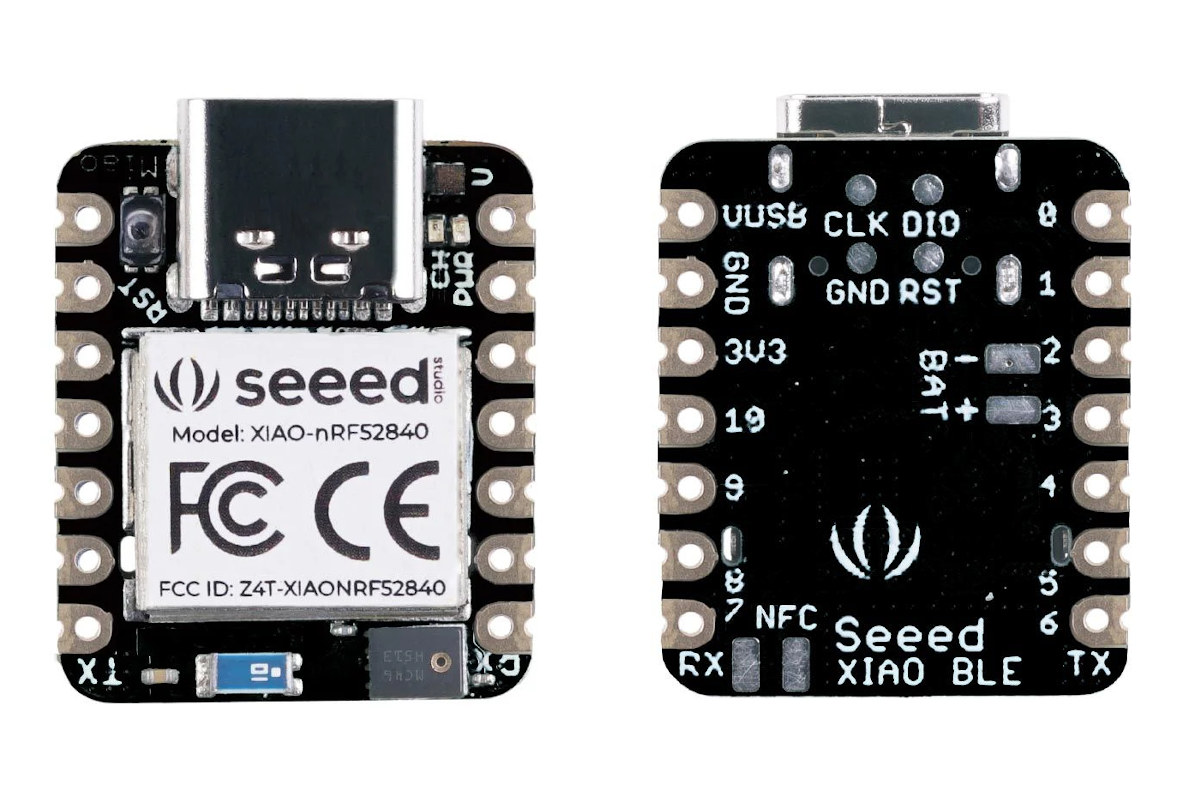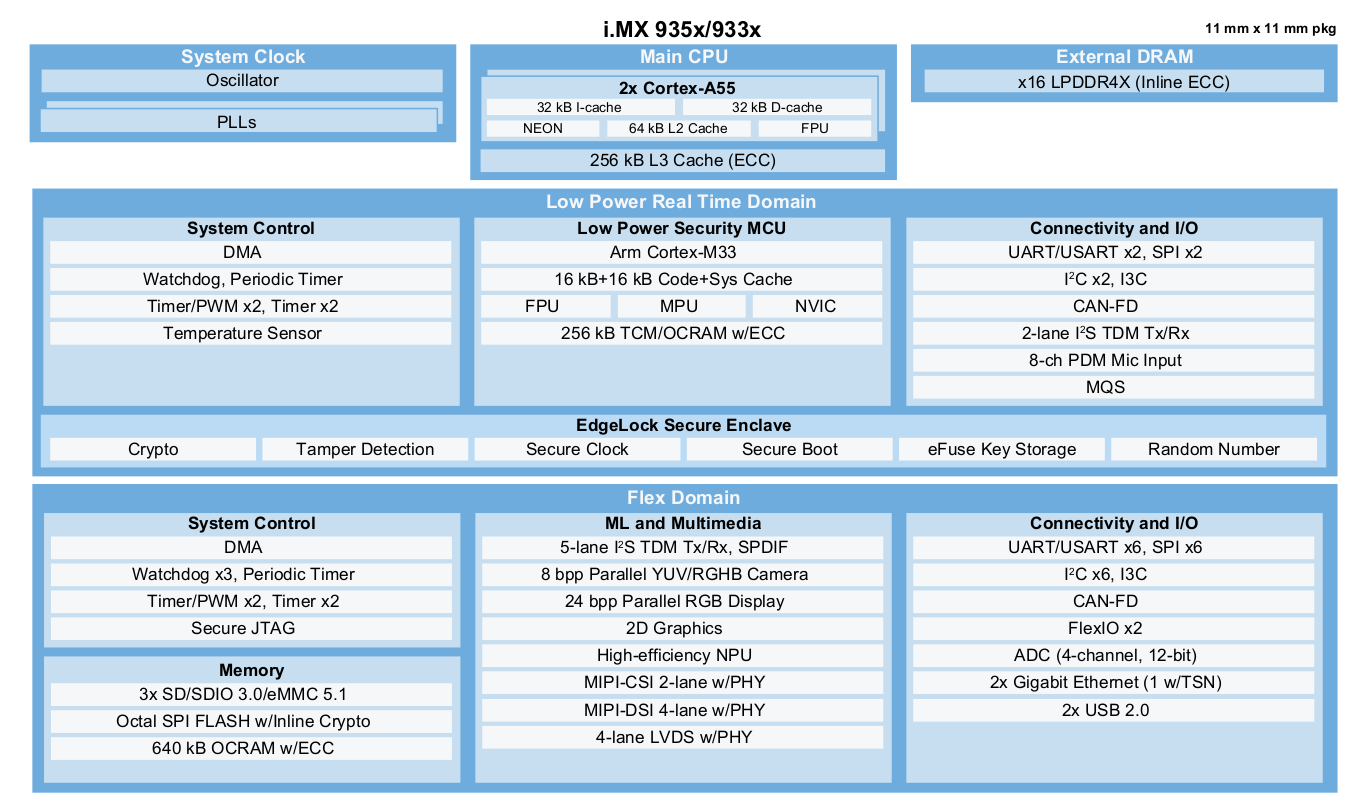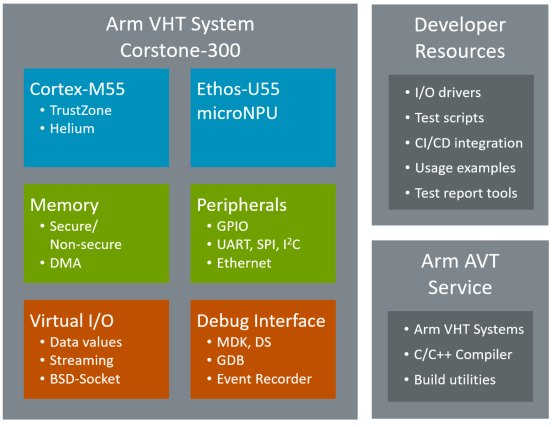Codasip has announced the L31 and L11 low-power embedded RISC-V processor cores optimized for customization of AI/ML IoT edge applications with power and size constraints. The company further explains the new L31/L11 RISC-V cores can run Google’s TensorFlow Lite for Microcontrollers (TFLite Micro) and can be optimized for specific applications through Codasip Studio RISC-V design tools. As I understand it, this can be done by the customers themselves thanks to a full architecture license as stated by Codasip CTO, Zdeněk Přikryl: Licensing the CodAL description of a RISC-V core gives Codasip customers a full architecture license enabling both the ISA and microarchitecture to be customized. The new L11/31 cores make it even easier to add features our customers were asking for, such as edge AI, into the smallest, lowest power embedded processor designs. The ability to customize the cores is important for AI and ML applications since the data types, […]
STMicro Intelligent Sensor Processing Unit (ISPU) combines MEMS sensor with DSP for AI “in the edge”
STMicroelectronics’ Intelligent Sensor Processing Unit (ISPU) is a single chip that combines a MEMS sensor together with a Digital Signal Processor (DSP) designed to run AI algorithms to let the chip make electronic decisions “in the edge” without help from the cloud or a local gateway. The ISPU is said to offer a smaller size compared to system-in-package devices, cut power consumption by up to 80%, and according to STMicro, launch the new “Onlife era” following the “Offline era” of the 2000’s where sensors were controlled by MCUs without network connectivity and the “Online era” in the 2010’s when sensors became connected to the cloud or a local gateway. ISPU key features: Enhanced 32-bit RISC Harvard architecture Extensible at the chip design phase with dedicated instructions or HW components Frequency / ODR (Output Data Rate) max – 5 MHz / 3.33 kHz – 10 MHz / 6.66kHz Four-stage pipeline 16-bit […]
Silicon Labs BG24 and MG24 2.4 GHz wireless MCU’s quadruple AI performance at a fraction of the energy
Machine Learning is getting everywhere including into 2.4GHz wireless microcontrollers with SIlicon Labds BG24 Bluetooth and MG24 multi-protocol Cortex-M33 microcontrollers that improve AI/ML performance by 4 times using 1/6th of the energy thanks to a built-in AI accelerator. That makes the new microcontrollers suitable for battery-powered edge AI devices with support for Matter (coming soon) as well as PSA Level 3 Secure Vault protection. Silicon Labs expects the chips to be found in various smart home, medical and industrial applications. BG24 and MG24 share the same block diagram and the same specifications apart from the supported wireless protocols: MCU core – Arm Cortex-M33 @ 78.0 MHz with DSP instruction and floating-point unit Memory – Up to 256 kB RAM data memory Storage – Up to 1536 kB flash program memory Wireless CPU – Arm Cortex-M0+ 2.4 GHz Radio Performance -104.5 dBm sensitivity @ 250 kbps O-QPSK DSSS -104.9 dBm sensitivity […]
MYIR introduces i.MX 8M Plus module and devkit with AI/ML capabilities
There are already plenty of i.MX 8M Plus systems-on-module, but here’s one more courtesy of MYIR Tech with MYC-JX8MPQ i.MX 8M Plus module with as well as MYD-JX8MPQ development board for evaluating the solution. The module is especially well suited to applications leveraging Artificial Intelligence (AI) and Machine Learning (ML) with the NXP Cortex-A53/M7 integrating a 2.3 TOPS Neural Processing Unit (NPU). The module comes with up to 6GB LPDDR4, 128GB eMMC flash, 32MB QSPI flash, a PMIC for power management, as well as a 314-pin MXM 3.0 connector exposing the I/Os from the processor. MYC-JX8MPQ module specifications: SoC – NXP i.MX 8M Plus (MIMX8ML8CVNKZAB) quad-core Cortex-A53 processor @ 1.6 GHz, real-time Arm Cortex-M7 co-processor @ 800 MHz, 2.3 TOPS AI accelerator, 2D/3D GPU, HiFi4 Audio DSP, and 1080p VPU System Memory – 3GB LPDDR4 (option up to 6GB) Storage – 8GB eMMC flash (option up to 128GB), 32MB QSPI […]
StarFive Dubhe 64-bit RISC-V core to be found in 12nm, 2 GHz processors
StarFive has just announced customers’ delivery of the 64-bit RISC-V Dubhe core based on RV64GC ISA plus bit manipulation, user-level interrupts, as well as the latest Vector 1.0 (V) and Hypervisor (H) instructions. StarFive Dubhe can be clocked up to 2 GHz on a 12nm TSMC process node, and the company also released performance numbers with a SPECint2006 score of 8.9/GHz, a Dhrystone score of 6.6 DMIPS/MHz, and a CoreMark score of 7.6/MHz. A third-party source told CNX Software it should be equivalent to the SiFive Performance P550 RISC-V core announced last summer, itself comparable to Cortex-A75. StarFive Dubhe highlights: Typical frequency – 2.0 GHz @ TSMC 12nm “Industry-leading” Power and Area Efficiency (TSMC 12nm) RISC-V Vector Extension Data types: floating point, fixed point and integer VLEN=128-1024bits ALU & data path width=128 or 256 bits Full vector register grouping (LMUL) support RISC-V Virtualization Extension Pre-integrated Multi-Core with Memory Coherency Support […]
Seeed XIAO BLE – A tiny nRF52840 Bluetooth 5.0 board with (optional) IMU sensor and microphone
Seeed Studio has just introduced two new members to their XIAO board family with the Seeed XIAO BLE and XIAO BLE Sense boards equipped with Nordic Semi nRF52840 Bluetooth 5.0 microcontroller, as well as an IMU sensor and microphone on the “Sense” model. Just like the earlier XIAO RP2040 board, the tiny Seed XIAO BLE board can be programmed with Arduino, MicroPython, and CircuityPython, and offers two headers with 7-pin each for GPIOs. What’s really new is the wireless connectivity, the sensors, and a battery charging circuitry. Seeed XIAO BLE specifications: Wireless MCU – Nordic nRF52840 Arm Cortex-M4F microcontroller @ up to 64 MHz with 1 MB flash, 256 KB SRAM, Bluetooth 5.0, NFC, Zigbee connectivity Storage – 2 MB QSPI flash Expansion I/Os 2x 7-pin headers with 1x UART, 1x I2C, 1x SPI, 1x NFC, 1x SWD, 11x GPIO (PWM), 6x ADC 3.3V I/O voltage (not 5V tolerant) Sensors […]
NXP i.MX 93 processor combines Cortex-A55 cores with Ethos U65 microNPU
NXP has unveiled the i.MX 93 processor family comprised of i.MX 935x, 933x, 932x, and 931x parts at this time with up to two Cortex-A55 cores, one Arm Cortex-M33 real-time core, as well as an Ethos U65 microNPU for machine learning (ML). We wrote about i.MX 9 family back in March with NXP telling us it would include an Arm Ethos U-65 microNPU and EdgeLock secure enclave, be manufactured with a 16/12nm FinFET class process, and includes the “Energy Flex” architecture to optimize power consumption by turning on/off specific blocks in the processor. The NXP i.MX 93 is the first family leveraging those new features, and we know have some more details. NXP i.MX 93 processor specifications: CPU 1x or 2x Arm Cortex-A55 @ 1.7 GHz with 32KB I-cache, 32KB D-cache, 64KB L2 cache, 256KB L3 cache with ECC 1x Arm Cortex-M33 @ 250 MHz low power microcontroller with 256KB […]
Cortex-M55 based Arm Virtual Hardware is now available in AWS Cloud
The Arm DevSummit 2021 is taking place on October 19-21, and the first announcements from Arm are related to IoT with “Arm Total Solutions for IoT delivering a full-stack solution to significantly accelerate IoT product development and improve product ROI”, “Project Centauri” aiming to achieve for an extensive Arm Cortex-M software ecosystem in the way that Project Cassini does for the Cortex-A ecosystem, starting with support for PSA Certified and Open-CMSIS-CDI cloud-to-device specification, and Arm Virtual Hardware based on Corstone-300 IoT platform with a Cortex-M55 MCU core and an Ethos-U55 microNPU accessible from Amazon Web Services. The first two are quite abstract right now, and more information may become available in the future, but the Arm Virtual Hardware is available now from AWS as a public beta, with 100 hours of free AWS EC2 CPU credits for the first 1,000 qualified users. The virtual hardware does not emulate only the […]


